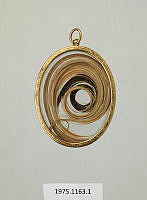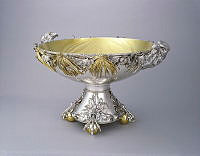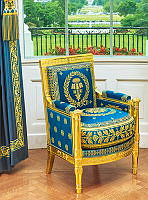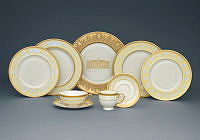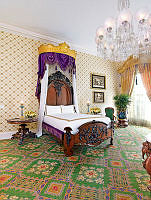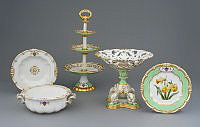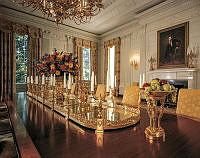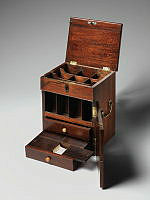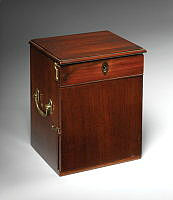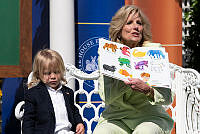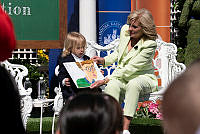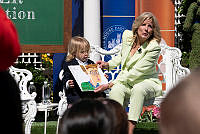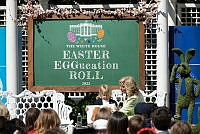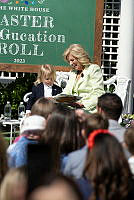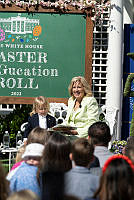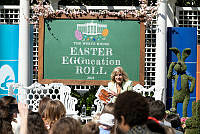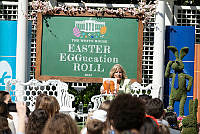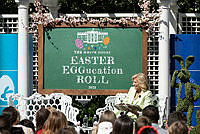Rubenstein Center Scholarship
Gilbert Stuart
American Portraitist
Gilbert Stuart is one of the most famous portraitists in American history, best known for his unfinished Athenaeum depiction of President George Washington. Gilbert Stuart was born in Saunderstown, Rhode Island on December 3, 1755, the youngest of three children. His family moved to Newport, Rhode Island a few years later, and Stuart began painting as a teenager. He initially studied under a local portraitist, Samuel King. His first known painting, completed in 1769, was titled Dr. Hunter’s Dogs.1 It is also known as Dr. Hunter’s Spaniels and The Hunter Dogs.2
In 1770, Stuart became an apprentice to Scottish portraitist Cosmo Alexander. After touring the southern colonies, they traveled together to Scotland in 1771, but Alexander died soon thereafter. Stuart returned to Newport and began painting portraits, including Mrs. John Bannister and her Son in 1774 and Benjamin Waterhouse in 1775. At the beginning of the American Revolution, as his Loyalist family fled to Canada, Stuart departed for London to establish himself as an artist. He struggled for several years to support himself as an organist and eventually received found assistance from Benjamin West, a former American colonial residing in London. While West preferred painting scenes from history, Stuart focused on portraiture. He became known for his uncanny ability to capture the personality of the individual in his painting.3

Gilbert Stuart, 1778, self-portrait
Redwood Library and Athenaeum in Newport, Rhode IslandStuart spent five years as an apprentice and assistant to West, improving his work with color and by developing a more sophisticated brushstroke.4 During this time, he began to exhibit at the Royal Academy and found considerable success with his 1782 painting, The Skater, a portrait of William Grant. Although it was originally planned as a traditional portrait, Grant arrived at Stuart’s studio on a brisk winter morning. Instead of sitting for the portrait, Stuart and Grant went skating in Hyde Park. When Stuart eventually painted the portrait, he depicted Grant gliding along a curve on the ice, his arms folded in typical skating form. Stuart’s inclusion of motion in the The Skater broke the previous European “Grand Manner” tradition of portraiture, which refers to an ideal artistic form combining the classical style of Greek and Roman drawing and the principles of the Italian Renaissance.5 On display at the Royal Academy, it received considerable accolades and Stuart’s reputation as a portraitist was firmly established.6
After opening his own studio and enjoying success as an artist, Stuart married a British woman, Charlotte Coates. Unfortunately, Stuart mismanaged his growing finances. In debt to numerous creditors, he moved his family to Dublin, where he engaged in portraiture of the Protestant minority ruling class for several years.7 The most famous portrait completed in Ireland was titled John, Lord Fitzgibbon (1789) which depicted the Lord Chancellor, the highest judicial officer in Ireland at the time. The portrait was painted on textured linen, likely a tablecloth. Completing such a regal portrait helped bolster Stuart’s international reputation as a premiere portrait artist. The full-length painting now resides at the Cleveland Gallery of Art.8 Despite his success in Ireland, Stuart again found trouble with his finances.

The Skater, 1782, Gilbert Stuart
Andrew W. Mellon Collection, National Gallery of ArtAfter the Americans defeated the British in the Revolutionary War, Stuart decided he would return to the newly formed United States and find a way to paint its most famous hero, George Washington. He believed that if he could paint Washington, he would “make a fortune.” Besides the prestige of Washington as his subject, Stuart viewed the opportunity as a way to pay back his British and Irish creditors.9 Stuart left Dublin in 1793, abandoning many half-completed portraits for his new quest.
Stuart landed in New York and engaged with several high-profile patrons to reestablish his reputation. In 1794, he painted a portrait of Supreme Court Chief Justice John Jay, who in turn introduced him to other connected clients. His 1794 portrait Catherine Brass Yates, the wife of a prosperous merchant, also received great acclaim. With less competition from other artists than in Europe, Stuart quickly distinguished himself in the United States as a renowned portraitist.
In 1795, Stuart attempted to secure a sitting with President George Washington. With a letter of introduction from John Jay, Stuart was successful in his endeavor. To capture the character of his subject, Stuart often engaged the man or woman in conversation. However, Washington proved reticent and it was difficult for Stuart to elicit much emotion from him. According to Washington’s grandson, Stuart began talking about horses, which animated the president.10

George Washington Lansdowne Portrait, 1796, Gilbert Stuart
White House Collection/White House Historical AssociationThe result was a portrait of Washington facing right, which is only available from replicas. Martha Washington liked the painting so much, she asked Stuart to paint both herself and her husband again for portraits that would be displayed at Mount Vernon. This commission led to the most popular artistic depiction of George Washington, known as the Athenaeum portrait. Stuart never finished the original, but he used it to make many replicas of the painting, including an 1805 version in the White House Collection. The original, unfinished painting was sold by Stuart’s daughter to the Boston Athenaeum in 1831. In 1980, the Smithsonian’s National Portrait Gallery and the Boston Museum of Fine Arts jointly purchased the painting.11 Washington’s likeness from this portrait is now featured on the United States one-dollar bill.
In 1796, while still in Philadelphia, George Washington sat a second time for the artist. This time, Stuart produced a full-length painting, measuring eight by five feet in size. Washington is dressed in civilian clothes, emphasizing his role as president rather than a military general. It is reminiscent of European portraiture, given the symbolic inclusion of objects and the posture of his outstretched right arm. In the portrait, Washington strikes an oratorical pose, likely modeled after his December 8, 1795 Annual Address in which he advocated for the Jay Treaty.12 He holds a sheathed sword while a copy of the Constitution and a history of the American Revolution are positioned next to a table leg. Washington’s expression is sometimes described as “impassive,” but Stuart indicated he wanted to convey the controlled passions of his temperament.13 Known as the Lansdowne Portrait, the original painting is on display at the Smithsonian’s National Portrait Gallery.14 One of the three believed Stuart copies of the painting is on display in the White House’s East Room. It has been a part of the White House Collection since 1800.
There is some controversy about whether the Lansdowne copy in the White House was actually painted by Gilbert Stuart. The painter allegedly denied in 1802 that he had painted the portrait on display at the White House. However, it is likely that Stuart was forced to deny that he had painted it since he actually sold it twice: once to the United States government in 1797 and then again to a New York museum proprietor, Gardiner Baker. Eventually, Baker’s copy ended up with a creditor, who again sold it to the United States government. Given the fact that Stuart profited twice from this copy, he “disowned the painting to cover his duplicity.”15

Dolley Madison, 1804, Gilbert Stuart
White House Historical Association/White House CollectionDuring the War of 1812, on August 24, 1814, the British marched into the capital city. According to popular folklore, First Lady Dolley Madison personally saved the portrait of Washington, cutting it out of its frame and carrying it off as wagons and carts departed the White House. However, it is more likely that Mrs. Madison instructed others to remove the portrait, including the president’s steward Jean-Pierre Sioussat and gardener Thomas McGrath.16 In the first White House memoir published, President Madison’s formerly enslaved valet, Paul Jennings, stated that the myth surrounding Dolley Madison’s independent rescue of the painting was “totally false.”17 The portrait returned to the rebuilt White House in 1817.
Gilbert Stuart moved his studio to Washington, D.C. in 1802. He was immensely popular in the nation’s young capital city and was flooded with requests for portraits from the social and political elite. He painted Dolley Madison in 1804 when her husband James served as Secretary of State; the likeness is regarded as exhibiting “astonishing subtleties…and masterful transitions of tone.”18 The portrait of Mrs. Madison became part of the White House Collection in 1994. Stuart painted Thomas Jefferson in 1805 in the style of a small medallion portrait. Jefferson considered it as one of the most accurate likenesses of him ever produced.19
After contracting malaria, Stuart relocated once again, this time to Boston. He spent his remaining twenty-three years there, painting the city’s most prominent residents, attending social functions, and mentoring young American artists.20 His work during this period included both the 1818 portrait of John Quincy Adams and the 1826 portrait of his wife, Louisa Adams. Both paintings are now part of the White House Collection. Stuart died in Boston in 1828 and was laid to rest in the Old South Burial Ground, now renamed Central Burying Ground.














